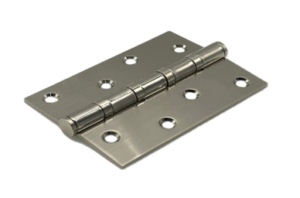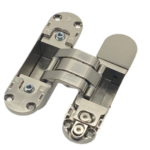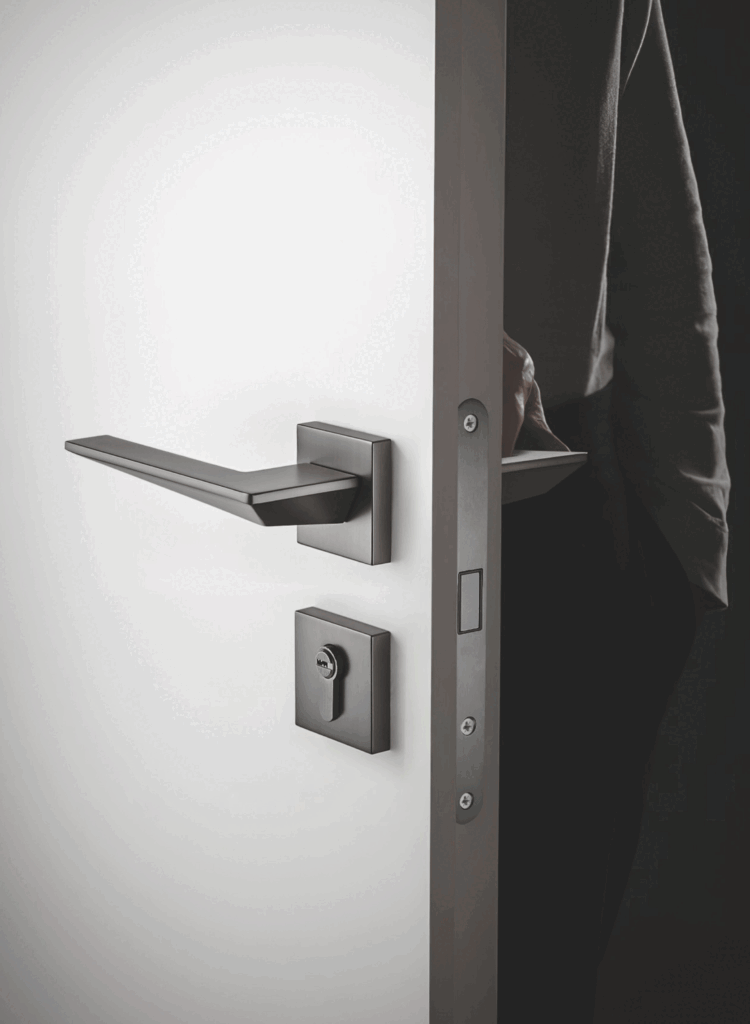Door hinges are a crucial component of any door system. They impact durability, aesthetics, security, and functionality. When choosing between exposed and concealed hinges, businesses must consider factors such as sealing performance, opening angles, longevity, design preferences, and cost-effectiveness.
In this blog, we will compare these two hinge types to help door manufacturers, importers, and building materials retailers make informed purchasing decisions.
What Are Exposed and Concealed Hinges?
Exposed hinges are traditional hinges visible when a door or cabinet is closed. They are attached to the surface of the door and frame, using simple mechanical components like pins and plates to enable smooth swinging motion.
Concealed hinges are hidden when the door is closed. Installed inside the door and frame, they provide a clean, modern look. Many include advanced mechanisms, such as hydraulic systems, to control movement and prevent slamming.


How They Work
- Exposed hinges operate through rotating leaves around a central pin, offering straightforward functionality. They are easy to install and maintain but lack advanced features.
- Concealed hinges use internal mechanisms to regulate door motion, ensuring quiet and controlled closing. While more complex to install, they combine aesthetic appeal with enhanced performance.
In summary, exposed hinges are practical and simple, while concealed hinges offer a modern design with added functionality. Each type serves distinct purposes based on design and usability needs.
Exposed Hinges vs. Concealed Hinges: Main Difference
1. Application Scope
Both exposed hinges and concealed hinges are widely used in doors and windows. Their key applications include:
- Exposed Hinges: Suitable for inward-opening windows and tilt-and-turn windows.
- Concealed Hinges: Suitable for tilt-and-turn windows and inward-opening windows.
While both hinge types cover similar applications, their differences become more apparent in performance aspects.
2. Sealing Performance
Sealing performance is critical for thermal insulation and energy efficiency. Here’s how each hinge type compares:
- Exposed Hinges: Installed outside the door frame. The installation requires cutting the sealing strip, which may reduce the overall sealing performance and insulation properties.
- Concealed Hinges: Installed within the door frame, preserving the integrity of the sealing strip. This enhances the door’s airtightness and thermal insulation.
For doors requiring higher insulation and sealing performance, concealed hinges offer a clear advantage.
3. Opening Angle
The opening angle determines the usability and accessibility of a door:
- Exposed Hinges: Allow doors to open up to 180°, providing a wider range of motion.
- Concealed Hinges: Typically open between 90° to 110°, though some high-end concealed hinges can now achieve 180°.
If a full 180° opening angle is required, exposed hinges are traditionally the better choice. However, advances in concealed hinge technology are bridging this gap.
4. Aesthetic Appeal
Different business and architectural styles call for different visual effects:
- Concealed Hinges: Offer a sleek, modern appearance, preferred in minimalist and contemporary designs.
- Exposed Hinges: Can act as decorative elements, especially when paired with designer door handles or mechanical locks.
For a clean, modern finish, concealed hinges are ideal. However, for a bold, decorative look, exposed hinges can complement traditional aesthetics.
5. Durability and Wear Resistance
Hinge durability impacts long-term performance and maintenance costs:
- Exposed Hinges: Provide smoother operation and better wear resistance due to a more natural load distribution.
- Concealed Hinges: Require higher-quality materials and precision engineering to achieve similar durability .
If longevity and lower maintenance costs are key concerns, exposed hinges have a slight edge.
6. Compatibility with Door Frames
Frame design can influence hinge selection:
- Exposed Hinges: Require a larger visible frame surface for secure installation.
- Concealed Hinges: Can be used with narrower frame designs, making them ideal for modern slim-frame doors .
For businesses offering narrow-frame or minimalist door designs, concealed hinges are a better fit.
7. Load-Bearing Capacity
Both hinge types support a wide range of door weights:
- Typically, 80kg – 150kg hinge options are available for both exposed and concealed hinges.
- Choosing the right hinge strength depends on the door’s material and size.
8. Cost Comparison
Price is a key factor in large-scale door hardware procurement:
- Exposed Hinges: Generally more affordable due to their simpler design and lower material costs.
- Concealed Hinges: Tend to be more expensive because they require higher precision engineering and premium materials .
If cost efficiency is a major concern, exposed hinges provide a budget-friendly option, whereas concealed hinges offer premium performance at a higher price.
Final Thoughts: Which One Should You Choose?
The choice between exposed hinges and concealed hinges depends on your priorities:
- For better sealing, modern aesthetics, and narrow-frame compatibility → Choose concealed hinges.
- For 180° opening angles, long-term durability, and decorative appeal → Choose exposed hinges.
- For cost-effective solutions → Exposed hinges are more budget-friendly, while concealed hinges offer higher-end performance.
At SUZHOU UMAY, we provide high-quality mechanical locks, door handles, hinges, peepholes, and door closers for door manufacturers, importers, and retailers worldwide. Contact us today to explore our full range of premium door hardware solutions that suit various business needs
Share This Story, Choose Your Platform!

